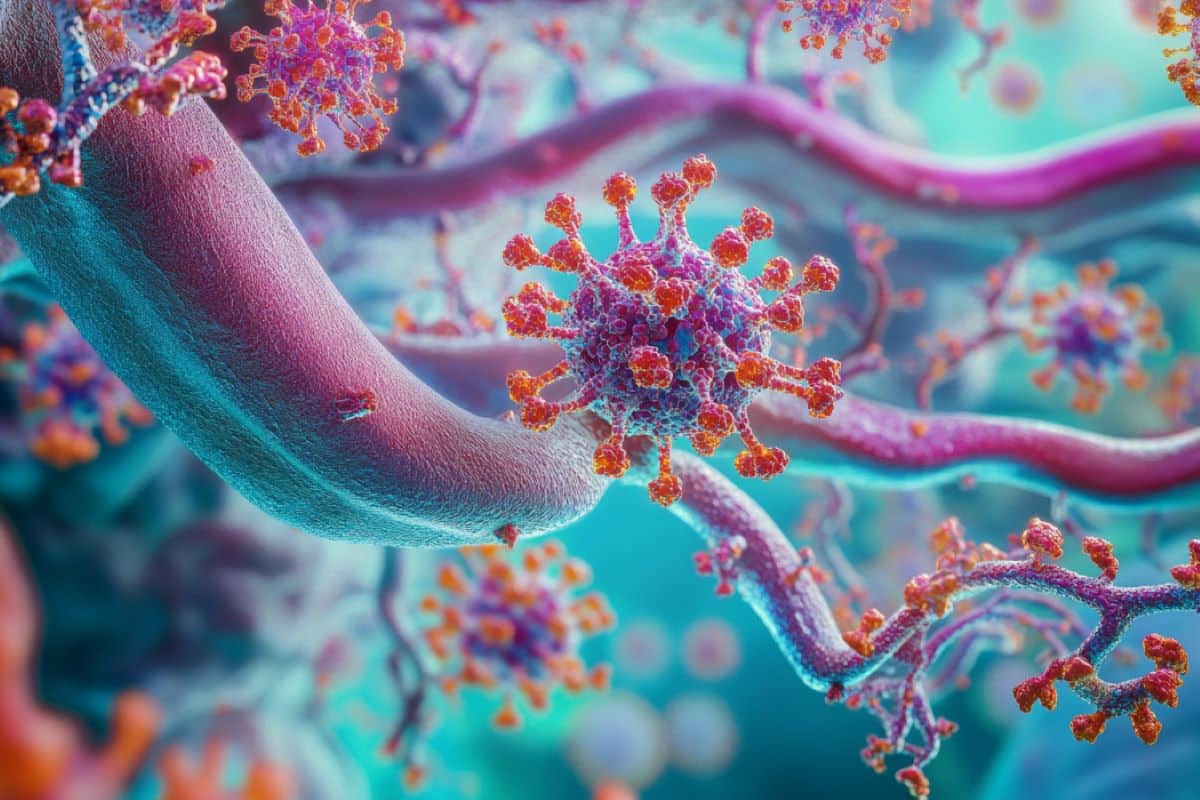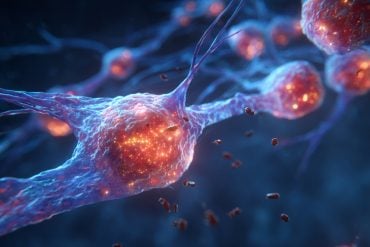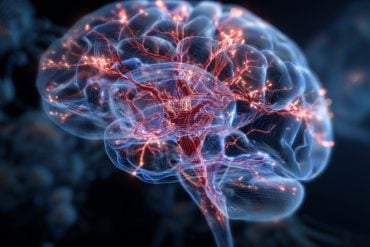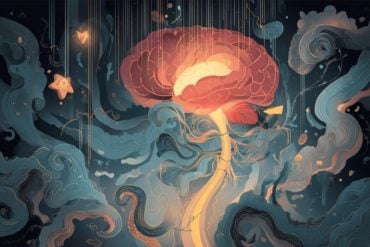Summary: A study found people with long COVID symptoms were twice as likely to have lingering SARS-CoV-2 proteins in their blood, suggesting a persistent viral reservoir may drive some ongoing symptoms. Researchers analyzed blood from 706 individuals and found that 43% of those with multisystem long COVID symptoms had viral proteins present months post-infection, compared to 21% of those without symptoms.
This discovery hints at potential benefits from antiviral treatments for those with persistent symptoms. However, the study also reveals that not all long COVID cases show persistent viral proteins, indicating other causes may contribute to this complex condition.
Key Facts:
- 43% of individuals with multisystem long COVID symptoms had persistent viral proteins.
- 21% of those without long COVID symptoms tested positive for viral proteins.
- Findings suggest long COVID may have multiple causes, possibly including immune dysfunction.
Source: Harvard
Researchers found people with wide-ranging long COVID symptoms were twice as likely to have SARS-CoV-2 proteins in their blood, compared to those without long COVID symptoms, according to a study out of Harvard-affiliated Brigham and Women’s Hospital.
Commonly reported long COVID symptoms included fatigue, brain fog, muscle pain, joint pain, back pain, headache, sleep disturbance, loss of smell or taste, and gastrointestinal symptoms.
Results are published in Clinical Microbiology and Infection.

Specifically, the team found that 43 percent of those with long COVID symptoms affecting three major systems in the body, including cardiopulmonary, musculoskeletal, and neurologic systems, tested positive for viral proteins within 1 to 14 months of their positive COVID test.
But only 21 percent of those who didn’t report any long COVID symptoms tested positive for the SARS-CoV-2 biomarkers in this same period.
“If we can identify a subset of people who have persistent viral symptoms because of a reservoir of virus in the body, we may be able to treat them with antivirals to alleviate their symptoms,” said lead author Zoe Swank, a postdoctoral research fellow in the Department of Pathology at BWH.
The study analyzed 1,569 blood samples collected from 706 people, including 392 participants from the National Institutes of Health-supported Researching COVID to Enhance Recovery (RECOVER) Initiative, who had previously tested positive for a COVID infection.
Using Simoa, an ultrasensitive test for detecting single molecules, researchers looked for whole and partial proteins from the SARS-CoV-2 virus. They also analyzed data from the participants’ long COVID symptoms, using electronic medical chart information or surveys that were gathered at the same time as the blood samples were taken.
It’s possible that a persistent infection explains some — but not all — of the long COVID sufferers’ symptoms. If this is the case, testing and treatment could aid in identifying patients who may benefit from treatments such as antiviral medications.
A condition with more than one cause
One of the questions raised by the study is why more than half of patients with wide-ranging long COVID symptoms tested negative for persistent viral proteins.
“This finding suggests there is likely more than one cause of long COVID,” said David Walt, a professor of pathology at BWH and principal investigator on the study. “For example, another possible cause of long-COVID symptoms could be that the virus harms the immune system, causing immune dysfunction to continue after the virus is cleared.”
To better understand whether an ongoing infection is behind some people’s long COVID symptoms, Swank, Walt, and other researchers are currently conducting follow-up studies.
They’re analyzing blood samples and symptom data in larger groups of patients, including people of wide age ranges and those with compromised immune symptoms. This way, they can also see if some people are more likely to have persistent virus in the body.
“There is still a lot that we don’t know about how this virus affects people,” said David C. Goff, a senior scientific program director for the RECOVER Observational Consortium Steering Committee and director of the Division of Cardiovascular Sciences at the National Heart, Lung, and Blood Institute (NHLBI), part of NIH.
“These types of studies are critical to help investigators better understand the mechanisms underlying long COVID — which will help bring us closer to identifying the right targets for treatment.”
Goff added that these results also support ongoing efforts to study antiviral treatments.
The SARS-CoV-2 blood test developed by Brigham and Women’s researchers is also currently being used in a national study, called RECOVER-VITAL, that is testing whether an antiviral drug helps patients recover from long COVID.
The RECOVER-VITAL trial will test the patients’ blood before and after treatment with an antiviral to see if treatment eliminates persistent viral proteins in the blood.
The idea that a virus can stay in the body and cause ongoing symptoms months after an infection isn’t unique to COVID.
“Other viruses are associated with similar post-acute syndromes,” said Swank. She noted animal studies have found Ebola and Zika proteins in tissues post-infection, and these viruses have also been associated with post-infection illness.
Funding: Funding for this work came from the National Institutes of Health (NIH) and Barbara and Amos Hostetter.
About this Long-COVID research news
Author: BWH Communications
Source: Harvard
Contact: BWH Communications – Harvard
Image: The image is credited to Neuroscience News
Original Research: Open access.
“Measurement of circulating viral antigens post-SARS-CoV-2 infection in a multicohort study” by David Walt et al. Clinical Microbiology and Infection
Abstract
Measurement of circulating viral antigens post-SARS-CoV-2 infection in a multicohort study
Objectives
To determine the proportion of individuals with detectable antigen in plasma or serum after SARS-CoV-2 infection and the association of antigen detection with postacute sequelae of COVID-19 (PASC) symptoms.
Methods
Plasma and serum samples were collected from adults participating in four independent studies at different time points, ranging from several days up to 14 months post-SARS-CoV-2 infection. The primary outcome measure was to quantify SARS-CoV-2 antigens, including the S1 subunit of spike, full-length spike, and nucleocapsid, in participant samples. The presence of 34 commonly reported PASC symptoms during the postacute period was determined from participant surveys or chart reviews of electronic health records.
Results
Of the 1569 samples analysed from 706 individuals infected with SARS-CoV-2, 21% (95% CI, 18–24%) were positive for either S1, spike, or nucleocapsid. Spike was predominantly detected, and the highest proportion of samples was spike positive (20%; 95% CI, 18–22%) between 4 and 7 months postinfection. In total, 578 participants (82%) reported at least one of the 34 PASC symptoms included in our analysis ≥1 month postinfection.
Cardiopulmonary, musculoskeletal, and neurologic symptoms had the highest reported prevalence in over half of all participants, and among those participants, 43% (95% CI, 40–45%) on average were antigen-positive. Among the participants who reported no ongoing symptoms (128, 18%), antigen was detected in 28 participants (21%). The presence of antigen was associated with the presence of one or more PASC symptoms, adjusting for sex, age, time postinfection, and cohort (OR, 1.8; 95% CI, 1.4–2.2).
Discussion
The findings of this multicohort study indicate that SARS-CoV-2 antigens can be detected in the blood of a substantial proportion of individuals up to 14 months after infection. While approximately one in five asymptomatic individuals was antigen-positive, roughly half of all individuals reporting ongoing cardiopulmonary, musculoskeletal, and neurologic symptoms were antigen-positive.






